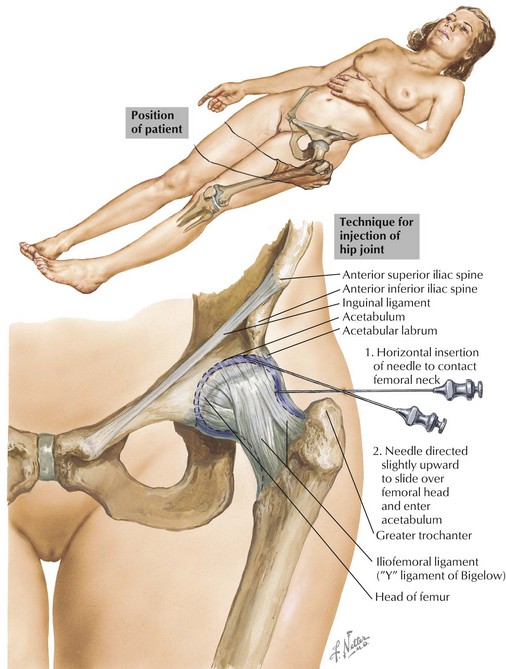Chapter 18 Complications of Intraarticular Joint Injections and Musculoskeletal Injections
 There should be a constant awareness of potential complications from interventional pain procedures, and efforts to minimize these complications should be implemented.
There should be a constant awareness of potential complications from interventional pain procedures, and efforts to minimize these complications should be implemented. Although uncommon, complications from intraarticular injections arise from needle placement or the injectate itself.
Although uncommon, complications from intraarticular injections arise from needle placement or the injectate itself.Introduction
Over recent years, interventional pain management has grown steadily. Consequently, the prevention of complications from interventional pain procedures should be a very important aspect of pain management. Although the true incidence is difficult to assess, it is extremely important to note and understand the potential risks and consequences. Appendicular intraarticular joint (hip, knee, shoulder, hand) and musculoskeletal injections are deemed some of the safest procedures performed in interventional pain management. The most common complications are infection, although septic arthritis, osteomyelitis, peripheral nerve injuries, pneumothorax, and skeletal muscle toxicity have all been reported (Table 18-1). The use of ultrasonography or fluoroscopy can assist in the visualization of nearby structures, thus decreasing the incidence of damage of these structures.
Table 18-1 Potential Complications and Avoidance at Each Site
| Joint | Problem | Avoidance |
|---|---|---|
| Hip joint | ||
| Shoulder joint | ||
| Knee joint | ||
| Intramuscular or trigger point |
Hip Joint Injections
Hip injection is a common procedure to alleviate hip pain because this is a location commonly affected by osteoarthritis (Fig. 18-1). Complications are rare with hip joint injections with proper patient selection, proper sterile technique, and appropriate injection technique. As with other injections, potential complications include bleeding or bruising, infection, allergic reaction to injectate, and increased pain. Injury to the femoral neurovascular bundle is a theoretical complication using an anterior approach to the hip joint, although it has yet to be described. The use of ultrasonography would allow visualization of this neurovascular bundle and would decrease the possibility of injury. Cheng and Abdil1 (2007) describe air embolism in three pediatric patients undergoing hip injections. During arthrography, injections of a small amount of air can be used to outline the joint for correct needle placement. These injections were done with even small amounts of air (<5 mL). This has not been described in the adult population.
Stay updated, free articles. Join our Telegram channel

Full access? Get Clinical Tree










